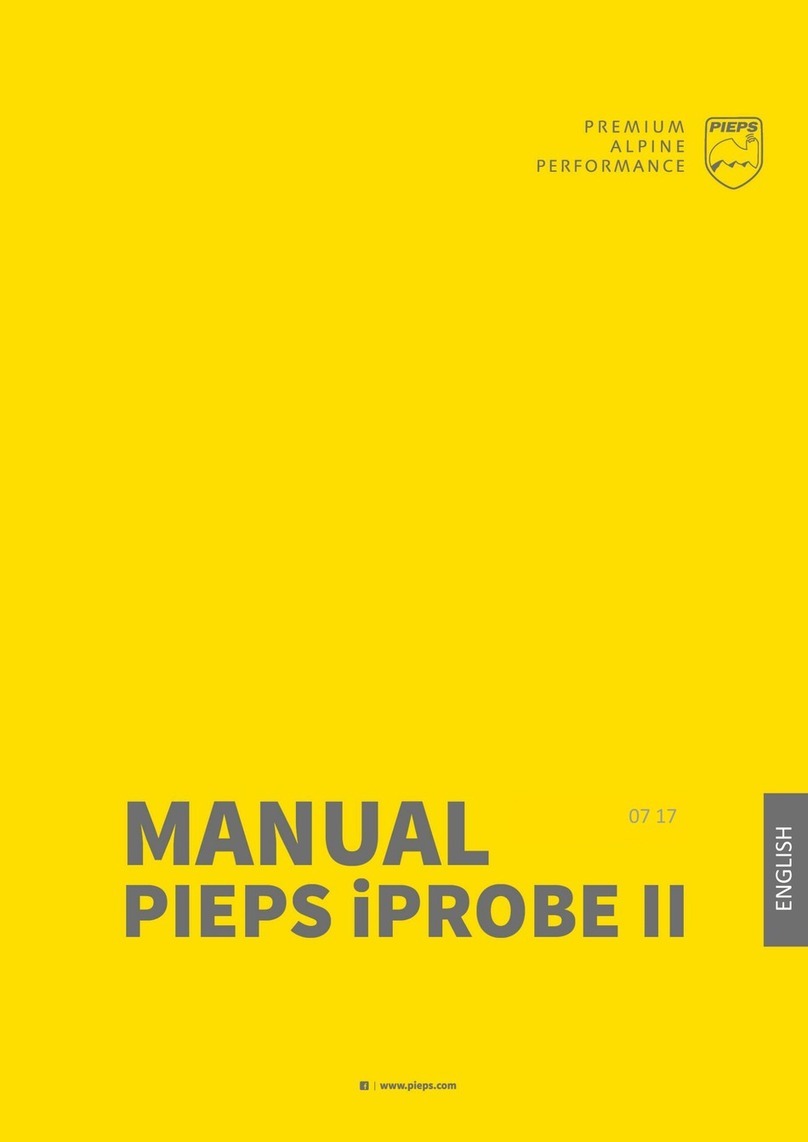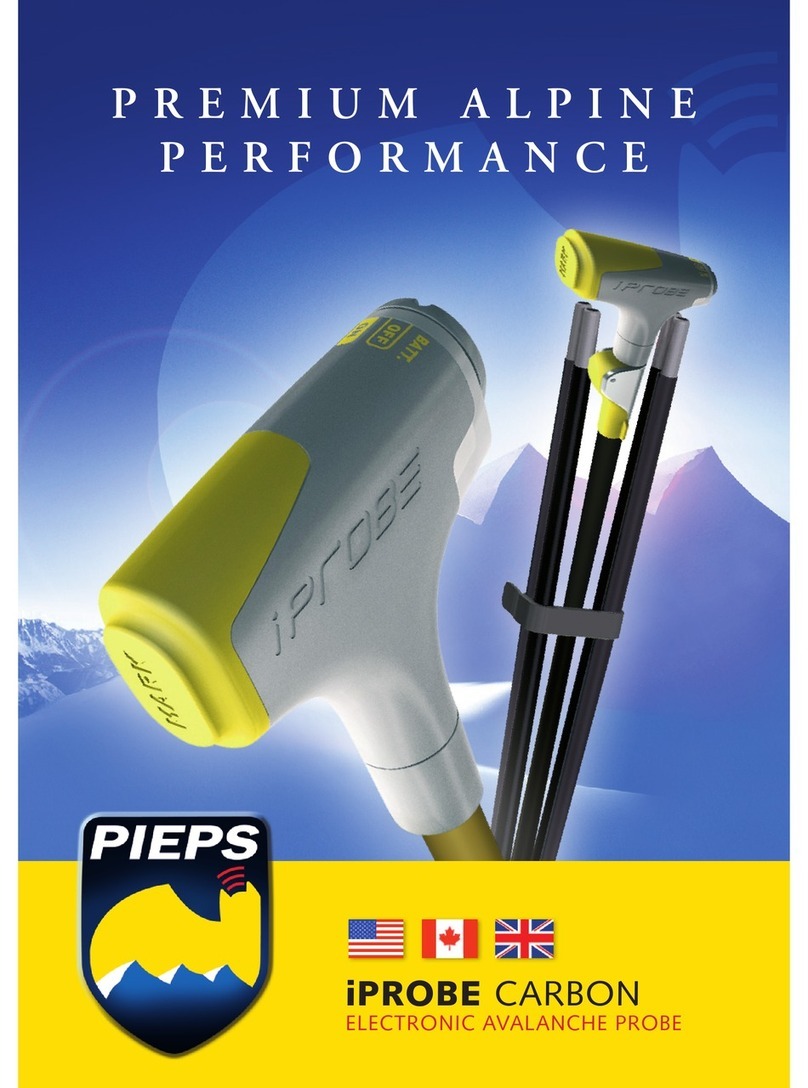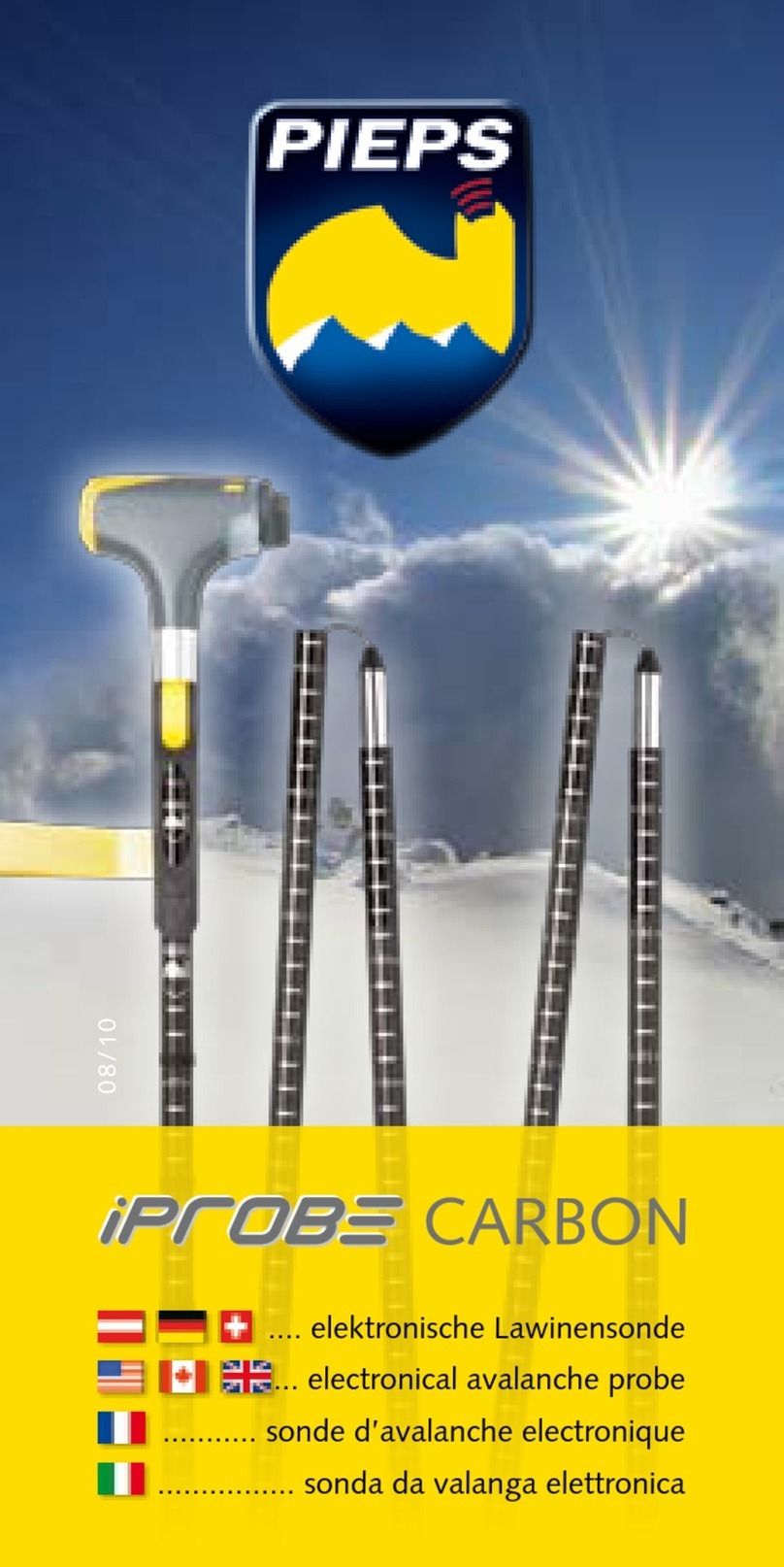
DEENESFRITCZSK
TECHNISCHE DATEN
Zulassung: Warnung: Änderungen oder Modikationen, die nicht ausdrücklich vom Hersteller freigegeben wurden, führen dazu, dass Sie das
Gerät nicht mehr betreiben dürfen! Hersteller: PIEPS GmbH, Herstellerland: Österreich, Gerätetype: PIEPS DSP; Das Gerät entspricht der
Norm ETS 300718 WEEE Directive 2002/96/EC; IC: 4710A-DSP01; FCC ID: REMDSP01; Dieses Gerät entspricht dem Paragraph
15 der FCC Vorschriften. Beim Betrieb sind folgende Punkte zu beachten: 1) Dieses Gerät verursacht keine Störungen und 2) dieses Gerät nimmt
keinen Schaden durch externe Funkstörungen, auch wenn das Gerät selbst vorübergehend in seiner Funktion gestört wird.
Hiermit erklärt PIEPS GmbH die Übereinstimmung des Gerätes PIEPS DSP mit den grundlegenden Anforderungen und Bestimmungen der
Direktive 1999/5/EC! Die Konformitätserklärung kann unter folgender Adresse gefunden werden: http://www.pieps.com/certication_
pieps_dsp.pdf
Hersteller, Vertrieb & Service: PIEPS GmbH, Parkring 4, 8403 Lebring, Österreich, of[email protected], www.pieps.comGarantiebestimmungen: Der Hersteller garantiert während 2 Jahren ab Kaufdatum für
Verarbeitungs- und Materialfehler. Die Garantie gilt nicht für Schäden, entstanden durch
falschen Gebrauch, Hinunterfallen oder Zerlegen des Gerätes durch nicht autorisierte Personen.
Jede weitergehende Gewährleistung und jegliche Haftung für Folgeschäden sind ausdrücklich
ausgenommen. Garantieansprüche mit Beilage des Kaufbelegs richten Sie bitte an die jeweilige
Verkaufsstelle.
Verlängern Sie die Garantie
Ihres PIEPS DSP/DSP Tour von 2 auf 5 Jahre: Mit der PIEPS Garantieverlängerung
haben Sie die Möglichkeit, die Standard-Garantie Ihres PIEPS DSP/DSP
Tour einfach und kostenlos zu verlängern. Registrieren Sie sich online unter
www.pieps.com und erhalten Sie Ihr Garantie-Zertikat für 5 Jahre ab Kaufdatum.
Dies spart Ihnen mögliche Reparaturkosten und kostbare Zeit. Die Garantie kann
innerhalb 3 Monate ab Kaufdatum verlängert werden.
PIEPS DSP |PIEPS DSP TOUR
457 kHz (EN 300718)
3 Batterien, Alkaline (AAA), IEC-LR03, 1,5V
min. 200 h Sendebetrieb
DSP: 60 Meter / DSP Tour: 50 Meter
50 Meter
Stereo Ohrhörer 3,5 mm, min. 32 Ohm
-20°C bis +45°C
198 g (inkl. Batterien)
(LxBxH) 116 x 75 x 27 mm
FEHLERCODES
Fehler-
code Fehlerbeschreibung Fehlerbehebung
Batterien überprüfen (Polarität und Span-
nung) und bei Bedarf ersetzen. Wird erneut
kein Display angezeigt, bringen Sie das LVS-
Gerät zum Service.
E 04 Ver-
stimmung des Senders durch Eisen,
Störungen durch andere elektronische
Geräte, Bruch einer Antenne
Wiederholen Sie den Vorgang im störungsfre-
ien Bereich (im Freien). Wird der Fehlercode
erneut angezeigt, bringen Sie das LVS-Gerät
zum Service.
E 21 Bringen Sie das LVS-Gerät zum Service.
E 22
Verstimmung der Antennen
durch Eisen, andere LVS Geräte in
der näheren Umgebung (unter 3 m),
Störungen durch andere elektronische
Geräte
Wiederholen Sie den Vorgang im störungs-
freien Bereich (im Freien). Wird der Fehler-
code erneut angezeigt, bringen Sie das LVS-
Gerät zum Service.
E 23 -
andere LVS Geräte in der nähe-
ren Umgebung (unter 3 m), Störungen
durch andere elektronische Geräte
Wiederholen Sie den Vorgang im störungs-
freien Bereich (im Freien). Wird der Fehler-
code erneut angezeigt, bringen Sie das LVS-
Gerät zum Service.
E 25 -
andere LVS Geräte
in der näheren Umgebung (unter 3 m)
senden mit einer Frequenz außerhalb
der Normtoleranz, Störungen durch
andere elektronische Geräte
Wiederholen Sie den Vorgang im störungs-
freien Bereich (im Freien). Wird der Fehler-
code erneut angezeigt, bringen Sie das LVS-
Gerät zum Service.
E 27 Schalten Sie das LVS-Gerät aus, warten Sie 5
Sekunden, schalten Sie das LVS-Gerät wieder
ein. Wird der Fehlercode erneut angezeigt,
bringen Sie das LVS-Gerät zum Service.
RU






























